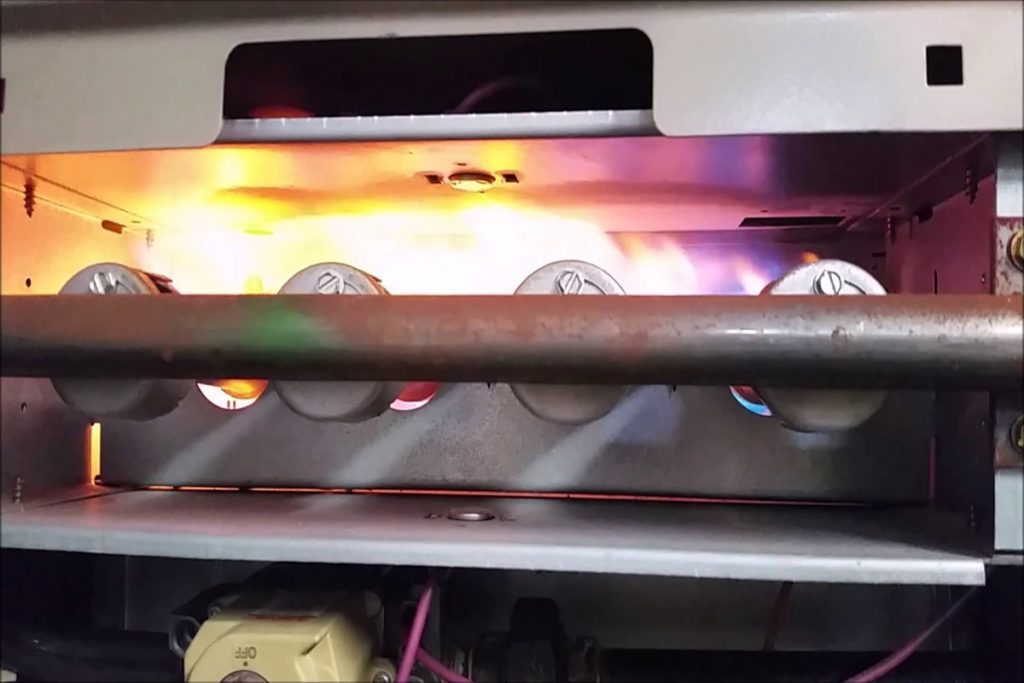Now that we’re fully into winter, and your commercial heating system has been operating for a few months, it’s important to make sure that your system components are working properly to ensure optimal performance and energy efficiency.
This isn’t just a concern during the winter. In fact, you should ensure that your system is ready for winter before the temperatures drop so you have plenty of time to arrange for a repair or replacement without it becoming an emergency.
Heat exchangers are among the most critical components of your HVAC system. Without properly functioning heat exchangers, your building and tenants could be left in the cold. Heat exchangers can also signal the health of your overall system, and provide you with an early warning if your entire system needs to be replaced.
What Do Heat Exchangers Do?
As the name suggests, your system’s heat exchanger is used to transfer heat or thermal energy. It accomplishes this by using water, steam, air refrigerant or gas, to make cold air warm in the winter, and hot air cool in the summer.
Heat exchangers are different depending on the type of equipment. Rooftop units/furnaces use tube or flute type exchangers. Water cooled heat exchangers have either a coil or plate design and are used in systems that use water or glycol for water-cooled heat pumps or centrifugal chillers. Although the operating principle of each system is the same, they might use different gas or liquid elements to heat or cool the air.
In short, heat exchangers create the heat transfer necessary to make the heating or cooling of your HVAC system more efficient. Less energy used means lower energy bills, something that every property manager loves to see.
Read More: Commercial Buildings: How To Save Money
What Cracked Heat Exchangers Mean?
Heat exchangers are like any piece of equipment – they have a limited life span and can fail from age, hours of operation, or operating conditions. Many heat exchangers last 15 years, but HVAC components and systems this old should be replaced.
If a heat exchanger has a crack in it, the air pressure within the combustion chamber changes, which can have a significant effect on how clean the flame burns and you lose your operating efficiency. More importantly cracks can cause improper combustion of the natural gas and create carbon monoxide which will enter the space and become a major health hazard for occupants.
But how can you tell if there’s a problem with your exchanger? Here are some signs to look for:
- Strong fumes: A cracked heat exchanger can produce strong fumes from improper combustion of the gas. These fumes can be extremely toxic to humans, so should you detect any contact an HVAC technician immediately.
- Health complaints: If your tenants or employees start to complain about headaches, flu-like symptoms, eye and nose irritation, drowsiness, disorientation, or nausea, the cause could be carbon monoxide from your cracked heat exchanger.
- Soot build-up: Because cracked heat exchangers are unable to complete the combustion process, there could be a build-up of soot in the interior and on the exterior near the unit exhaust. Soot in or on your furnace signals a problem with your heat exchanger.
- Yellow flame: Your furnace is healthy when the flame is a steady blue colour. A moving or flickering yellow could indicate a cracked heat exchanger.
- Adjacent components are corroded or cracked: The chemical fumes that leak from a cracked heat exchanger can cause corrosion on adjacent parts. You may also see stress cracks on these components from the strain that results from a malfunctioning heat exchanger.
Should I Repair or Replace My Heat Exchangers?
The B149.1-15 Gas Code says under Section 4.21.3:
“Where the heat exchanger of a commercial or industrial appliance is found to be defective, it may be repaired, and the repair shall be in accordance with procedures acceptable to the authority having jurisdiction.”
There are no manufacturers that provide a procedure for field repair of a heat exchanger, which means it has to be replaced.
Also, if your unit is more than 15 years, it’s likely best to replace your whole system, as an aged system will cost more over time to maintain than replace.
Your HVAC technician can provide you the best recommendation on how to handle a cracked heat exchanger, and help you keep an eye on its ongoing performance.
Stay on Top of Your HVAC System With Regular Maintenance
The best way to ensure that your heat exchanger is good condition, as well as your overall HVAC system, is by having a qualified HVAC technician perform regular maintenance inspections.
In addition to checking components such as boilers, valves, cooling towers, and humidifiers, your HVAC technician will inspect your heat exchanger for cracks, and provide recommendations on replacement or repair. They’ll also check for other issues that could damage your heat exchanger down the road.
Maintenance programs are the best investment you can make for the health and longevity of your HVAC system.
Read More: Why Regular HVAC Maintenance is Crucial To Your Bottom Line
If you have any questions or concerns about your heat exchangers or other aspects of your HVAC system, give us a call anytime. We’re always happy to discuss how Springbank Mechanical Systems can help make your commercial HVAC system more efficient and bring you long-term energy savings.
Gregg Little and Paul De Thomasis are Co-owners of Springbank Mechanical Systems. They can be reached at 905-569-8990, or via email at gregg@springbank.com or paul@springbank.com.

